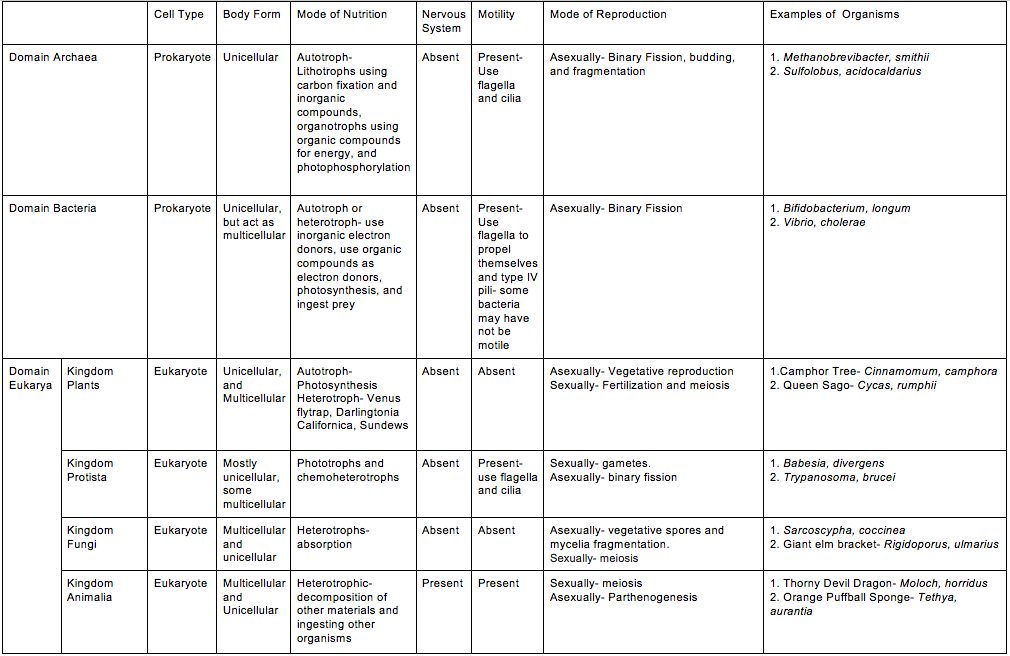Overview
Comparison Chart between Domains and Kingdoms:

History of the Classification System:
In the fourth century Aristotle, a Greek taxonomist, organized all living things into a classification system. He divided them into two main groups: plants and animals. In each main group there was a subcategory. The subcategories for animals were land animals, water animals and air animals. For plants, the subcategories were small, medium and large. Aristotle’s classification system was used till the early 1600’s when it was edited by John Ray because Aristotle’s system was not clear and did not classify all organisms. John Ray, was the first person to use genus and species to help classify living organisms, with these new categories added to the classification system he classified over 18,000 organisms. Later, in the 1700’s, a Swedish taxonomist named Carolus Linnaeus further edited the classification system. He created many more categories and subcategories that organized thousands more organisms. Linnaeus created the five kingdoms and added to Ray’s subcategories, he added the subcategories class, order. Not only did Linnaeus do these things but he also created the binomial naming system. This is a system where the genus and species of the organism is used as the organism’s name, which made it easier to avoid confusion [1a]. Now, the classification system has changed and made it much easier to look for and classify to organisms that are found. There are eight categories; domain, kingdom, phylum or division, class, order, family, genus and species. The basis of the new taxonomy was the theory of evolution.
DM=60% RJ=40%